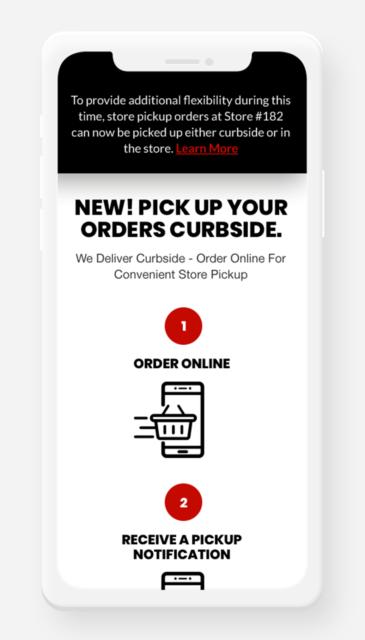Trends & best practices
Learnings from curbside pickup in the time of COVID
By Michal Harel
May 5, 2020

5 min read
This moment in time has required companies to think creatively on how to allow their customers quick access to products. In fact, I was very impressed to see how quickly our own top customers have adjusted to making curbside pickup available. The adoption required them to take different steps, including backend logistics, on the ground pickup playbooks, adjustments to their website and mobile app and finally coordinating all three!
The data proves that the results are phenomenal in terms of revenue uplift and customer perception of the brand. A company that adjusted quickly is not only viewed as an innovative and creative one, but also as caring and responsible, one that is going above and beyond to provide to its customers.
So, how can you make curbside pickup better? Here are some of our tips:
1. Communication is key!
Good communication is always a necessity but especially during this time of uncertainty–don’t add to the confusion for your customers! For instance, a Fortune 50 company implemented curbside pickup and placed a banner throughout their site to direct to it. However, when visitors clicked on the banner, the information on the landing page was not clear, and they found their users clicking all over in confusion and then abandoning.

What should you do?
- Confirm site / app information and FAQ pages are up-to-date with fulfillment information. Don’t forget to include return and order cancelation instructions!
- Remove all surprises. Create an alert when a customer changes fulfillment type, as items could be removed from cart if they are not available for curbside pickup.
- Make sure you train your employees – this is critical for your success.
- Customer experience continues at pickup: set expectations of order time, Instruct the customer clearly where to park, how to handle questions during pickup etc.
2. Nail-down logistics
With demand soaring, it is completely understandable that processes and details have been strained. Indeed, for a major retailer, after choosing curbside pickup, the audience received an API 40x error that an item was out of stock. This audience converted at 2.53% lower.

What should you do?
- Only display items that the selected store has in inventory.
- Provide clear signage–easy in, easy out at pickup.
- Consider implementing curbside pickup times for customers to avoid overflow.
- Try setting up calendar reminders to be sent to phones, asking where order should be placed (trunk of car, bed of truck), or allow for notes / comments, to minimize exposure.
- In addition to text and emails alerting when an order will be ready, consider placing an order tracker within the Orders section of the site to allow for further visibility as the order is being prepared.
- Forget something? Consider allowing window of time for order add-ons or modifications.
3. Simplify checkout
When the customer has made it all the way through the journey to checkout, ensure that the final stage is as easy as possible. A top retailer experienced an error in checkout when their customers tried to mix curbside pickup with another delivery option. Even though their FAQ announced that multiple fulfillment types were allowed, their customers received an “oops!” pop-up that prevented them from moving forward and resulted in a 29% drop in conversion.

What should you do?
- Let the customer complete multiple fulfillment types with one transaction. A customer might want to have heavier products sent home while smaller items to be picked up.
- Allow customers to use in store coupons with curbside pickup and make sure you place curbside information and FAQs on the order confirmation page.
In these crazy times, there are many opportunities for companies to consider creative and innovative approaches to the customer experience. Curbside pickup is one of the tools that companies have in their tool kit to better serve buyer needs. It will be interesting to see how much of this practice will remain with us in the years to come and what will be left out as a result. Will this time of innovation stick or will companies revert to old practices?







share
Share